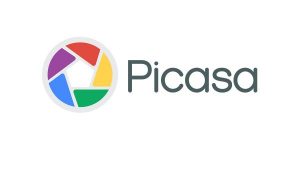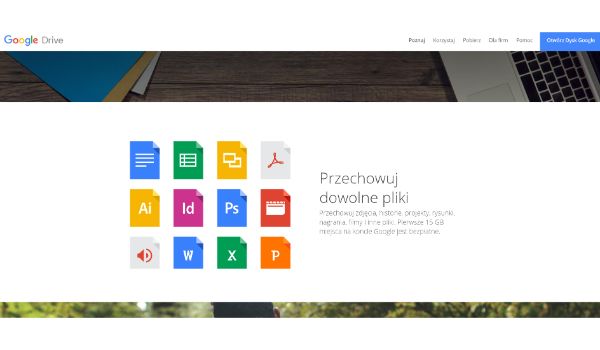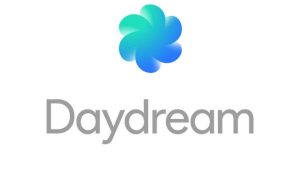Google All Product List – Failed, Dead & Active 2019
One of the most revolutionary companies in our world. Gamechanger and scientist in one firm. Even with those titles, it cannot avoid flops and spectacular failures. Ladies and gentlemen: Google and it’s tools – failed, dead and active is our topic in this article. Let’s begin and check out what worked and what not. Introduction
We all know Google, no matter if you are male or female, if you are old or young, from America or Japan, at some point everyone used products made by a company that is named as simply, as catchy “Google”. When you think about this company, We are quite sure, that success is one of the few words that come to your mind, but is it true? Is Google always successful, its ideas and projects always top-notch? Well, you saw the title already, so the answer is obvious – No. After years and years of existence this company made world-shaking products, in both good and bad ways, we will show you the most interesting ones right now. So let’s start our journey on Google’s most and least successful projects! 1. Dead and killed apps
Below we present the most popular and biggest GApps that are dead or killed by Google at the moment. Some of them were great but in the end, they did not live up to expectations, which led to their death. Here we go!
1.1 Google+
 owner: Google
As we all know Google wished to be among the most popular social networks for a long time, he tried, and tried, and tried, but just couldn’t get to the top. Google+ has been chosen to change it, it was supposed to be a real threat to Facebook’s crown, thanks to the previous experience with Google Buzz and Google Wave they had enough data to really compete with the best social network sites. Google+ launched on June 28, 2011, after two weeks it had 10 million users. In a month 25 million, at the end of 2011, Google+ had 90 million users. After some time the service’s aim changed, from being a social media network to become“a bridge between all Google services”, it gave the service big boost in numbers but also annoyed most of the users mostly because of the need to connect your account with Google+ to post anything on their services. It had numbers on its side, even if it was annoying it still got users, so why Google+ is being shut down? Well, research reveals that Google+ users spend on average only 3 minutes per month versus Facebook at over 400 minutes, not to mention that in recent months, it was discovered that due to Google+ issue, over 54 million of personal data of their user might have been available to outside developers.
Lifespan: 2011-2019
owner: Google
As we all know Google wished to be among the most popular social networks for a long time, he tried, and tried, and tried, but just couldn’t get to the top. Google+ has been chosen to change it, it was supposed to be a real threat to Facebook’s crown, thanks to the previous experience with Google Buzz and Google Wave they had enough data to really compete with the best social network sites. Google+ launched on June 28, 2011, after two weeks it had 10 million users. In a month 25 million, at the end of 2011, Google+ had 90 million users. After some time the service’s aim changed, from being a social media network to become“a bridge between all Google services”, it gave the service big boost in numbers but also annoyed most of the users mostly because of the need to connect your account with Google+ to post anything on their services. It had numbers on its side, even if it was annoying it still got users, so why Google+ is being shut down? Well, research reveals that Google+ users spend on average only 3 minutes per month versus Facebook at over 400 minutes, not to mention that in recent months, it was discovered that due to Google+ issue, over 54 million of personal data of their user might have been available to outside developers.
Lifespan: 2011-2019
1.2 Picasa
 owner: Google
We all know it, or at least heard of it. Picasa was an Image organizer and viewer for editing digital photos. Originally it was created by company “Lifescape”, but Google acquired Picasa from them in 2002, so pretty much 90% of its life it has been under Google parent ship. Picasa was probably one of the most successful Google children, after all, it lived 14 good years, got quite a lot of updates, went from Picasa to Picasa 3.9. Thanks to the love from Google, Picasa had face recognition, geotagging, backup of images you were editing, (so you could always come back to the original one) and of course a lot of editing and organization tools, that you could use, thanks to Picasa being freeware. It also had some connections to other applications, like Picasa Web Albums and Hello, in which you could host the images or send/publish them on blogs.
The project was shut down because Google wanted to focus on a single photos service, so they chose “Google Photos”.
Lifespan: 2002-2016
owner: Google
We all know it, or at least heard of it. Picasa was an Image organizer and viewer for editing digital photos. Originally it was created by company “Lifescape”, but Google acquired Picasa from them in 2002, so pretty much 90% of its life it has been under Google parent ship. Picasa was probably one of the most successful Google children, after all, it lived 14 good years, got quite a lot of updates, went from Picasa to Picasa 3.9. Thanks to the love from Google, Picasa had face recognition, geotagging, backup of images you were editing, (so you could always come back to the original one) and of course a lot of editing and organization tools, that you could use, thanks to Picasa being freeware. It also had some connections to other applications, like Picasa Web Albums and Hello, in which you could host the images or send/publish them on blogs.
The project was shut down because Google wanted to focus on a single photos service, so they chose “Google Photos”.
Lifespan: 2002-2016
1.3 Project ARA
 owner: Google
We particularly have been hyped for this one. Project ARA allowed you to make pretty much a Lego phone, all the important parts like processor, battery or camera were designed to be a module, which you could just attach to the “core”, thanks to that you could just change a particular part, instead of buying a whole new phone. Thanks to this idea, your phone lifespan could be expanded by quite a bit, and it would be also good for the environment thanks to the reduction of electronic waste. Sadly google canceled the whole project and right now they are only some gossips remaining, that it might be developed by some third parties. Shame.
Lifespan: 2013-2016
owner: Google
We particularly have been hyped for this one. Project ARA allowed you to make pretty much a Lego phone, all the important parts like processor, battery or camera were designed to be a module, which you could just attach to the “core”, thanks to that you could just change a particular part, instead of buying a whole new phone. Thanks to this idea, your phone lifespan could be expanded by quite a bit, and it would be also good for the environment thanks to the reduction of electronic waste. Sadly google canceled the whole project and right now they are only some gossips remaining, that it might be developed by some third parties. Shame.
Lifespan: 2013-2016
1.4 Google Glass
 owner: Google
Another ambitious project by Google, that failed miserably. Google Glass was a brand of smart glasses designed by Google X, it was supposed to mimic a smartphone display, provide the same amount of information, just hands-free. Sounds great, right? Well, maybe a little too great, there were a lot of voices that complained about the possible lack of privacy (you could record people without them knowing, make photos, etc), also there was a lot of complaining, about possible apps that could be installed in the device, some of them were discovered only months after Google Glass premiere. Experts at the University of Massachusetts developed a way to steal smartphone passwords using just the glasses, the device just “remembered” the moves of the finger so you could copy it. Google Glass died on January 15, 2015, when Google announced that they will stop producing the prototypes.
Lifespan: 2013-2015
owner: Google
Another ambitious project by Google, that failed miserably. Google Glass was a brand of smart glasses designed by Google X, it was supposed to mimic a smartphone display, provide the same amount of information, just hands-free. Sounds great, right? Well, maybe a little too great, there were a lot of voices that complained about the possible lack of privacy (you could record people without them knowing, make photos, etc), also there was a lot of complaining, about possible apps that could be installed in the device, some of them were discovered only months after Google Glass premiere. Experts at the University of Massachusetts developed a way to steal smartphone passwords using just the glasses, the device just “remembered” the moves of the finger so you could copy it. Google Glass died on January 15, 2015, when Google announced that they will stop producing the prototypes.
Lifespan: 2013-2015
1.5 Google Hangouts
 owner: Google
Communication platform, it included features like messaging, video chat and VOIP. Hangouts replaced communication apps that Google was supporting before (Google Talk, Google+ Messenger, old hangouts in Google+ that were a video chat system). Google also mentioned that Hangouts will be the future of Google Voice, Google’s telephony product. In 2017 Hangouts got divided into 2 products
owner: Google
Communication platform, it included features like messaging, video chat and VOIP. Hangouts replaced communication apps that Google was supporting before (Google Talk, Google+ Messenger, old hangouts in Google+ that were a video chat system). Google also mentioned that Hangouts will be the future of Google Voice, Google’s telephony product. In 2017 Hangouts got divided into 2 products
- Hangouts Chat
- Hangouts Meet The one that dies in 2019 will be Hangouts Meet which was way more popular and futuristic, due to free access users were really enjoying the app, it got over 1 billion(!) installs on Android. Hangouts Chat, on the other hand, was more business oriented, it also requires its users to pay for GSuite to even start using it. It’s worth mentioning that Hangouts Chat isn’t nearly as developed as his brother Meet, to be fair Google announced that they will spend remaining 10 months to upgrade Hangouts Chat, and implement all the features from the classic Hangouts. Lifespan: 2013-2019
1.6 Google Reader
![]() owner: Google
Portal based on web feeds, thanks to it you could subscribe to an RSS feed and be on-line with your favorite treads and sites. Death of Google Reader was inevitable, after all the way of news consumption has changed. Years ago typical reader just sits down and went through all the links on the application, nowadays we are consuming all the information in a bit, not whole, you just go through some of it when you have some time off. Google Reader had a loyal group of fans who were devastated by the news that Google is shutting Reader down, after the shutdown announcement other RSS platform named “Feedly” announced that 500,000 new users had joined them within 48 hours, and more than 3 million in the next two weeks.
Lifespan: 2005-2013
owner: Google
Portal based on web feeds, thanks to it you could subscribe to an RSS feed and be on-line with your favorite treads and sites. Death of Google Reader was inevitable, after all the way of news consumption has changed. Years ago typical reader just sits down and went through all the links on the application, nowadays we are consuming all the information in a bit, not whole, you just go through some of it when you have some time off. Google Reader had a loyal group of fans who were devastated by the news that Google is shutting Reader down, after the shutdown announcement other RSS platform named “Feedly” announced that 500,000 new users had joined them within 48 hours, and more than 3 million in the next two weeks.
Lifespan: 2005-2013
1.7 Google Hands-free
 owner: Google
Mobile payment system, that allowed it’s users to pay by saying the phrase “I will play with Google”, thanks to that solution you didn’t have to take out your phone, all you had to do was just to say it. Google Hands-Free also required you to take a photo first. The idea was really neat, it used Bluetooth to wirelessly connect to the terminals, then your cashier would be presented with your image, he just had to see that you are yourself, and that’s all, transaction completed. After all, the idea didn’t scale, Google ceased the project in order to focus on more popular Android Pay.
Lifespan: 2016-2017
owner: Google
Mobile payment system, that allowed it’s users to pay by saying the phrase “I will play with Google”, thanks to that solution you didn’t have to take out your phone, all you had to do was just to say it. Google Hands-Free also required you to take a photo first. The idea was really neat, it used Bluetooth to wirelessly connect to the terminals, then your cashier would be presented with your image, he just had to see that you are yourself, and that’s all, transaction completed. After all, the idea didn’t scale, Google ceased the project in order to focus on more popular Android Pay.
Lifespan: 2016-2017
1.8 Google Nexus
 owner: Google
It’s not a single device, Google Nexus was actually quite a big project, a few devices under the same codename and OS (Android). Nexus project wasn’t entirely dependant on Google though, ASUS and HTC were also involved, these companies were mostly responsible for the hardware. The most known and popular devices in the whole project were a smartphone, named (not surprisingly) Nexus. There were also Nexus tablets and streaming media players series which aren’t available anymore. In 2016 Google announced that they won’t work on Nexus anymore, mostly due to their new phone idea called Pixel and overall lack of interest from users.
Lifespan: 2010-2016
owner: Google
It’s not a single device, Google Nexus was actually quite a big project, a few devices under the same codename and OS (Android). Nexus project wasn’t entirely dependant on Google though, ASUS and HTC were also involved, these companies were mostly responsible for the hardware. The most known and popular devices in the whole project were a smartphone, named (not surprisingly) Nexus. There were also Nexus tablets and streaming media players series which aren’t available anymore. In 2016 Google announced that they won’t work on Nexus anymore, mostly due to their new phone idea called Pixel and overall lack of interest from users.
Lifespan: 2010-2016
2. Currently alive and well apps and systems
As we had a look at the dead apps, not time has come to cover some of the living ones. Below you will find well known, working and in good shape Google apps, that are still in use and on the market.
2.1 Android
 One of the most successful Google acquisition in their whole history, Android Inc which was the parent of the Android got bought by Google in 2005, the first Android device launched in 2008. The source code of Android is open source-ish, it’s only licensed under the Apache License, thanks to it there is a big open-source community that is using the code to update older devices or develop new features that original Android lacked in their mind. Surely it’s worth mentioning that Android has been the best selling OS for smartphones since 2011, in 2017 it has over two billion MONTHLY(!), active users.
Lifespan: 2008-????
One of the most successful Google acquisition in their whole history, Android Inc which was the parent of the Android got bought by Google in 2005, the first Android device launched in 2008. The source code of Android is open source-ish, it’s only licensed under the Apache License, thanks to it there is a big open-source community that is using the code to update older devices or develop new features that original Android lacked in their mind. Surely it’s worth mentioning that Android has been the best selling OS for smartphones since 2011, in 2017 it has over two billion MONTHLY(!), active users.
Lifespan: 2008-????
2.2 Google Maps
 owner: Google
We are quite sure that everyone knows Google Maps, no matter if you are using a car, bike or your bare feet, after all, everyone got lost at least once (including us) and used Google’s navigation system to help themselves. The whole story started when Google acquired the skeleton of its today’s glory in 2004 form Where 2 Technologies, and from that point on this app just got better and better, and it doesn’t look like it’s going to stop anytime soon. Right now Google Maps has countless features that are trying to (with better or worse effect) show you the world and places you might want to go. Here are the most popular ones.
owner: Google
We are quite sure that everyone knows Google Maps, no matter if you are using a car, bike or your bare feet, after all, everyone got lost at least once (including us) and used Google’s navigation system to help themselves. The whole story started when Google acquired the skeleton of its today’s glory in 2004 form Where 2 Technologies, and from that point on this app just got better and better, and it doesn’t look like it’s going to stop anytime soon. Right now Google Maps has countless features that are trying to (with better or worse effect) show you the world and places you might want to go. Here are the most popular ones.
-
- Directions and transit – The most useful part of Google Maps, the application provides you with a route planner, thanks to which you can find available directions through driving, walking, or biking.
- Traffic Conditions – Thanks to its colored overlay we all started to hate color red, after all, it indicates that we are gonna waste some time on traffic, but that’s the function of this feature, thanks to it we can prepare for some inconvenience during our trip and sometimes avoid the traffic jams we would normally run into.
- Street View – Feature that provides a 360° view of location on a street level. It got released on May 25, 2007, and first, it had only five cities in its inventory, right now we can view most cities in the world using this feature.
- Indoor maps – Thanks to it you can track your movements and navigate even in buildings, such as airports, museums, universities, etc.
Thanks to its simplicity and usefulness Google Maps is the most popular navigation system that is actively used by all of the phone users, for the exact stats you can click here.
Lifespan: 2004-????
2.3 Google Drive
 owner: Google
Google’s file storage, the company allows its users to store files on their servers, additionally, it has a synchronizing feature that works across devices and shares all the files users has uploaded. It’s both available in online and offline mode, though if you want to access your storage when you are offline you need to install Google Drive app beforehand. As a part of the office suite, Google Drive also contains Google Docs (spreadsheets, presentations, drawings, forms, etc) files created that way are automatically saved on Google Drive. When it comes to storage sizes, as a free user you get 15 gigabytes of space to save on, there are obviously ways to increase that amount if you want to, you just need to pay, that way you can get up to 30 terabytes of storage, it’s also worth mentioning that the biggest single file you can upload at once can’t be bigger than 5 terabytes.In 2017 Google Drive reached over 800 million active users, which shows how popular is it.
Lifespan: 2012-????
owner: Google
Google’s file storage, the company allows its users to store files on their servers, additionally, it has a synchronizing feature that works across devices and shares all the files users has uploaded. It’s both available in online and offline mode, though if you want to access your storage when you are offline you need to install Google Drive app beforehand. As a part of the office suite, Google Drive also contains Google Docs (spreadsheets, presentations, drawings, forms, etc) files created that way are automatically saved on Google Drive. When it comes to storage sizes, as a free user you get 15 gigabytes of space to save on, there are obviously ways to increase that amount if you want to, you just need to pay, that way you can get up to 30 terabytes of storage, it’s also worth mentioning that the biggest single file you can upload at once can’t be bigger than 5 terabytes.In 2017 Google Drive reached over 800 million active users, which shows how popular is it.
Lifespan: 2012-????
2.4 Google Chrome
 owner: Google
One of the most popular browsers these days, and to be honest it’s not surprising, this one is really one good of an app. Google Chrome is available on Windows, Linux, macOS, iOS and also Android. Thanks to the multi-platforming and variety of features Chrome after only 3 years became the most popular browser, beating Mozilla. According to StatCounter in 2016, Chrome had had 62% worldwide desktop usage share, in comparison the second most popular was Mozilla Firefox with 16%. Various independent statistics show that Chrome is the fastest or one of the fastest browser right now, but surely, as a browser it has, it’s cons as well right?
Sure does! You probably know it already, it’s eating your RAM like a BOTTOMLESS BEAST, it might be the most demanding browser there is on market right now, but hey, everything has its price, right?
Lifespan: 2008-????
owner: Google
One of the most popular browsers these days, and to be honest it’s not surprising, this one is really one good of an app. Google Chrome is available on Windows, Linux, macOS, iOS and also Android. Thanks to the multi-platforming and variety of features Chrome after only 3 years became the most popular browser, beating Mozilla. According to StatCounter in 2016, Chrome had had 62% worldwide desktop usage share, in comparison the second most popular was Mozilla Firefox with 16%. Various independent statistics show that Chrome is the fastest or one of the fastest browser right now, but surely, as a browser it has, it’s cons as well right?
Sure does! You probably know it already, it’s eating your RAM like a BOTTOMLESS BEAST, it might be the most demanding browser there is on market right now, but hey, everything has its price, right?
Lifespan: 2008-????
2.5 Google Daydream
 Google’s VR (virtual reality) built in platform for Android (“Nougat” 7.1 and later). Phones which follow the requirements for both software and hardware are called “Daydream-ready”.If the mobile is so-called “Daydream-ready” then you can use the VR head-mounted display mount to enjoy your VR experience. Google’s idea to give you virtual reality on your phone is really neat, most of the reviews are also positive, thanks to the comfortable design, the mounting device is light and comfortable, which makes your session even more enjoyable.I’m quite sure VR and AR (Augmented Reality_)_ is the way to go in future, so this Google’s project should last for some time, let’s hope we will see some amazing development in future.
Lifespan: 2016-????
3. Summary
Google’s VR (virtual reality) built in platform for Android (“Nougat” 7.1 and later). Phones which follow the requirements for both software and hardware are called “Daydream-ready”.If the mobile is so-called “Daydream-ready” then you can use the VR head-mounted display mount to enjoy your VR experience. Google’s idea to give you virtual reality on your phone is really neat, most of the reviews are also positive, thanks to the comfortable design, the mounting device is light and comfortable, which makes your session even more enjoyable.I’m quite sure VR and AR (Augmented Reality_)_ is the way to go in future, so this Google’s project should last for some time, let’s hope we will see some amazing development in future.
Lifespan: 2016-????
3. Summary
Google as a company is often sluggish, ruthless and most certainly annoying for some of their users. Their ideas and projects are often controversial and sometimes you probably wonder “why are they even doing it?” The truth is quite simply because they have to, Google is trying to change the world and if someone’s aim is that big, failures are unavoidable, but even when we see that many of their projects are failing, we just know that their goal is closer and closer.